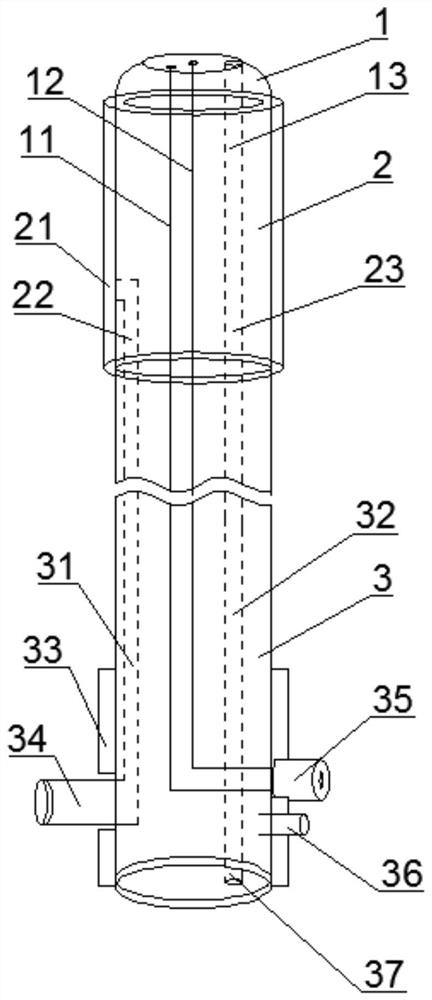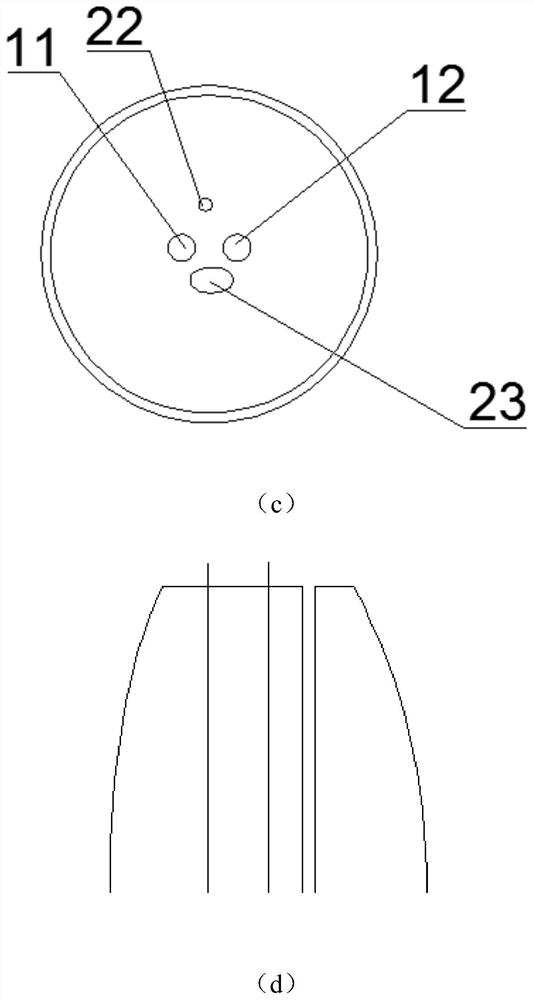Lithotripsy balloon catheter for calculus removal
A lithotripsy and catheter technology, applied in medical science, heating surgical instruments, surgery, etc., can solve the problems of common bile duct obstruction, difficult nursing care, high cost, etc., and achieve the effect of preventing displacement and increasing the efficiency of lithotripsy
- Summary
- Abstract
- Description
- Claims
- Application Information
AI Technical Summary
Problems solved by technology
Method used
Image
Examples
Embodiment 1
[0049] In this embodiment, further, the total length of the catheter is 40-60 cm.
[0050] PTCD drainage of bile was performed first to control biliary infection and jaundice, and the PTCD tube was left in place for 2 months.
[0051] A zebra guide wire was inserted through the original PTCD tube, and the guide wire crossed the stone and entered the distal end of the duodenum through the duodenal papilla.
[0052] Indwell the guide wire and exit the original PTCD tube, insert the guide wire through the tip of the lithotripsy catheter, if image 3 As shown in (a) to (c), under the guidance of the guide wire, the lithotripsy catheter was sent into the common bile duct, and the contrast was injected through the water injection joint to show the size and location of the stone, and then the balloon was sent to the duodenal papilla. The duodenal papilla is balloon dilated by injecting contrast medium through the balloon connector, and the dilation diameter is 0.8-1.2cm.
[0053] T...
Embodiment 2
[0057] In this embodiment, the total length of the catheter is 2.2-2.8 m.
[0058] A duodenoscope was inserted through the mouth, and after successful bile duct intubation, endoscopic retrograde cholangiography was performed first to determine the number, location and size of stones, and then a small incision of the duodenal papillary sphincter was performed, and a 1.0cm-diameter A cylindrical balloon dilates the duodenal papilla.
[0059] Such as Figure 4 As shown in (a) to (d), the balloon catheter is inserted through the duodenal clamp under the guidance of the guide wire, and the balloon is filled to drag the small stones at the lower end of the common bile duct directly into the duodenum. When the diameter of the stone exceeds 1cm, put the tip of the balloon catheter close to the stone, fill the balloon and push the balloon to the distal end of the common bile duct. After the tip of the balloon catheter is close to the stone, fill the balloon to the diameter of the comm...
PUM
| Property | Measurement | Unit |
|---|---|---|
| Diameter | aaaaa | aaaaa |
| Diameter | aaaaa | aaaaa |
| Length | aaaaa | aaaaa |
Abstract
Description
Claims
Application Information
 Login to View More
Login to View More - R&D Engineer
- R&D Manager
- IP Professional
- Industry Leading Data Capabilities
- Powerful AI technology
- Patent DNA Extraction
Browse by: Latest US Patents, China's latest patents, Technical Efficacy Thesaurus, Application Domain, Technology Topic, Popular Technical Reports.
© 2024 PatSnap. All rights reserved.Legal|Privacy policy|Modern Slavery Act Transparency Statement|Sitemap|About US| Contact US: help@patsnap.com










